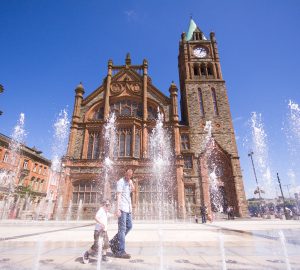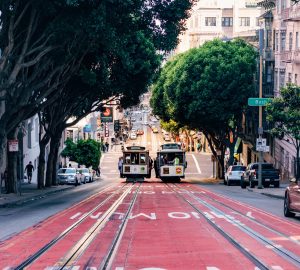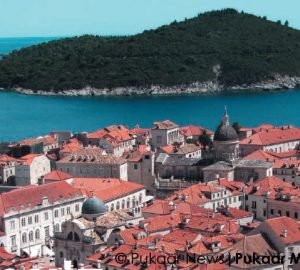ITV Central News Editor Gary Newby talks of the profound beauty of the Irish city.
Some of life’s surprising and profoundly memorable experiences often arise from events we’d neither planned nor expected.
And so it was when a friend and I took a recent spontaneous trip to Belfast that I was to experience this first hand.

The availability of cheap flights and accommodation, and good dining and drinking in vibrant surroundings, provided the motivation and our only aim for the visit.
However, on the second day of the trip we accepted the offer of the services of a guide for a tour of the history of the city during the Northern Ireland conflict. The tour was a revelation.
It was fascinating, sometimes incredulous and deeply moving, I was left with a new respect for the city and it’s people.
There were also moments of uneasiness.
Belfast, with a population size almost identical to that of Leicester, remains segregated by high walls, known as Peace Lines, and gates are still used to close the roads between Protestant and Catholic estates at night.
I was also reminded how within a generation Northern Ireland has emerged from its violent recent history we know as ‘The Troubles’ which began amid a campaign against discrimination of the Catholic minority in 1969.
Involving Republican and Loyalist paramilitaries as well as British state security services, the conflict became the longest major campaign in the history of the British Army.
Before it was brought to an uneasy end with the Good Friday Agreement, 3,500 people had been killed – 1,600 of them in Belfast.

Free from the intense violence of former years, Belfast has gained more political power and been boosted by investment and increasing numbers of tourists.
Cultural quarters, including its own version of the Golden Mile have been developed.
The Titanic Quarter alone promises to create one of the largest waterfront developments in Europe, but it’s Belfast’s history that will always be its biggest story.
As I stood at the gates of a paramilitary cemetery beside the Peace Lines, my surprise at the unexpected turn the trip had taken was insignificant compared to the experiences of the people who live and have lived here.
My guide, a Loyalist, once believed he’d never be able to step beyond his side of the city’s divide.
Whilst some tensions remain, it’s exhilarating to hear the optimism he holds for the future of Belfast.
Once unimaginable to him when the conflict, like so many others throughout history seemed too entrenched to ever end, he can now envisage a day when the walls of the Peace Lines finally fall.






